Last week I attended 9Marks’ “First Five Years” conference in Ft. Worth. From my perspective, Garret Kell’s message on “Making Changes” was probably the most rewarding talk of all. It’s full of biblical truth and practical wisdom. Every pastor, whether or not he’s in the first five years of ministry, will find encouragement aplenty.
Book to Look For: On Sanctification
I consider Sinclair Ferguson the greatest living guide for pilgrims on the way to heaven—at least when it comes to biblical/theological books. His publishing output is broad and comprehensive. Rarely does a year go by without another contribution from the Scotsman. In late October he’ll published Devoted to God: Blueprints for Sanctification. It surely will be a candidate for book of the year.
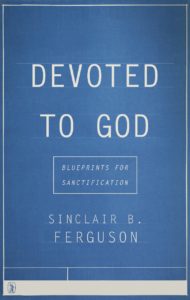 According to the Trust
According to the Trust
The Banner writes:
Christians are transformed by the renewing of their minds. They understand that in large measure how they think about the gospel will determine how they will live for God’s glory. They learn to allow the word of God to do its own work, informing and influencing the way they think in order to shape the way they live.
In a series of Scripture-enriched chapters Sinclair B. Ferguson’s Devoted to God works out this principle in detail. It provides what he describes as ‘blueprints for sanctification’—an orderly exposition of central New Testament passages on holiness. Devoted to God thus builds a strong and reliable structural framework for practical Christian living. It stresses the foundational importance of fundamental issues such as union with Christ, the rhythms of spiritual growth, the reality of spiritual conflict, and the role of God’s law. Here is a fresh approach to an always relevant subject, and a working manual to which the Christian can turn again and again for biblical instruction and spiritual direction.
According to Ferguson
Here’s what Ferguson himself had to say about the book in an interview with Fred Zaspel:
Zaspel:
Do you have any new books in the works that we can expect?Ferguson:
Thank you for asking, Fred. The Lord willing, yes. The next one is entitled Devoted to God, and is a treatment of sanctification. I realize there are excellent books on the theme of holiness (Walter Marshall’s classic, Ryle’s great work, and more recently Kevin de Young has written on the subject)—so obviously one needs to “justify” writing another one. The subtitle is Blueprints for Sanctification and the book begins with a somewhat different “take” on what “holiness” means. If there is a distinctive feature that justifies another book on the theme (can we have too many?) it probably lies in the approach. I have tried to focus on a selection of central New Testament passages that provide the groundwork for sanctification (“blueprints”) and work through them in a progressive and cumulative way. If readers know George Smeaton’s two great classic volumes on the atonement, Devoted to God is a kind of more modest (and doubtless very inferior!) attempt to do something similar with sanctification. In harmony with the principles of our Lord’s prayer in John 17 that sanctification takes place through his word, my aim has been to draw the blueprints for sanctification from within both the context and the atmosphere of the text of Scripture itself. I think the book is due out by the Summer of this year.
Tolle lege!
Real Leadership
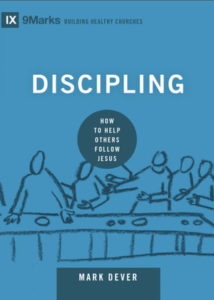 One of the most useful books I’ve read so far in 2016 is Mark Dever’s Discipling: How to Help Other Follow Jesus.
One of the most useful books I’ve read so far in 2016 is Mark Dever’s Discipling: How to Help Other Follow Jesus.
The final chapter offers nine basic steps to raising up church leaders. Tucked away in Step #6 (“Give Feedback”) is a sagacious point no pastor should miss—especially young pastors like me. Dever writes,
So many times I’ve seen men, particularly younger guys, act as if real leadership is shown in correcting others. That’s why young men’s sermons often scold. What they haven’t figured out is that you can often accomplish more by encouragement. There are times to scold. But 80 to 90 percent of what you hope to correct can be accomplished through encouragement.
As another pastor often says, “You can’t say, ‘Amen,’ if you don’t also say, ‘Ouch.'”
2 Reasons Why You Should Go to Seminary

I’ve uttered many things over the years I wish I could take back. I’m sure more foolish proclamations will end up in my “Hall of Shame.” One of the more egregious examples is what I said about seminary while at my uncle’s house back in 2006.
Well, You See . . .
Several of us were seated in my Uncle Dary’s plush study reviewing the goings on in the extended Stone family. For just over a year I’d been serving in the student ministry at FBC Prosper. The Stone side of my heritage has always valued education. Thus, whenever the grandparents, aunts, uncles, and cousins were present, it wasn’t long until the question came out. Up to this point, I’d handled the issue with what I thought was appropriate deference. But for whatever reason (I’m still not sure what caused it) when the inevitable ask arrived on this occasion my response was bubbly—bubbles of the boiling kind.
The question: “Jordan, when are you going to go to seminary?”
My answer: “I’m not planning on ever going. I don’t see any need for it.”
Filling My Mouth with a Foot
For the next two and a half years I was content to let my heart only harden more. By this time, I’d joined the staff of an Acts 29 church when Driscoll was at the height of his MMA-pastor phase. The ethos of the network at the time was mainly anti-seminary. My boss at the time (in)famously declared seminary was worthless. “I can teach you everything they will, and I’ll do it for free!” he shouted across the hallway one afternoon. I soaked it in. Sometime during this era, I told my father I was going to “beat the system.” By that, I meant I would successfully move up the pastoral ladder without graduate education. Hubris rarely has rung so loud in my life. And that’s saying something.
Some dear mentors of old ran me down in late 2008 to inquire about my new role at the new church. If ever there were poster children, in a good way, for seminary work it was these two brothers. They looked like and sounded as if they’d just left a rousing theological debate at the local library. But the disposition was far from off-putting. It was oddly compelling. They asked if I’d considered going to seminary and, cut to the quick by their kind sincerity, I said, “I am now.”
And So It All Began
About eight months went by, and I hadn’t done anything related to seminary. So my mentors summoned me, literally, to the office. I showed up at their church’s office, they took my lunch order, grabbed the grub, and we broke bread. I was well on my way to eating my third chip when the ambush arrived. “So, Jordan. When will you be going to Charlotte?” one of them asked quite casually. RTS Charlotte was their alma mater, you see. My feeble response was, “My wife and I are trying to get pregnant. I’m not sure it’s wise to head east and forsake my current salary.” I’ll never forget their response, “Jordan, now is not the time for a baby! Now is the time for study!”
Sure enough, just a few weeks later my wife found out she was pregnant. After further counsel with my wife and these assertive fellows it was decided, I’d get my M.A.R. through RTS Global. I’m convinced it was one of the greatest decisions I’ve ever made.
A Seminary Apologia
Six years later I have the M.A.R. in hand; I’m one semester away from a Th.M. at SBTS, and—Lord willing—just under two years away from finishing a Ph.D. Seminary education is almost as much a part of my life as soccer used to be. As a former adversary of seminary work, let me try to offer an apology for theological education under two simple points.
Seminary education grows ability. This is, in many ways, the reason we go to seminary. We go to learn things we wouldn’t learn otherwise. Radical outliers aside, who honestly would study Hebrew on their own initiative? Would you really read Donald Fortson’s Colonial Presbyterianism: Old Faith in a New Land if you didn’t take his “History of Christianity II” course? Would you spend a weekend parsing through the communicatio idiomatum for Dr. Swain? Probably not. But my seminary experience has made me do those things. Furthermore, it’s enabled me to do them. Theological tools I never had now lie in my soul’s workshop.
Seminary gives you the ability of familiarity. It acquaints you with scholars, movements, theologies, and interpretations you’d likely never have otherwise. Sure, some students sound a lot like the caricature of seminarians—after seminary, all they can do is speak in a way no ordinary church members does. But my experience and observation say that’s not the norm. All in all, seminary will sharpen you skill with Scripture. And that’s something from which every pastor (and congregation) can profit.
Seminary education grows humility. Many young men I’ve talked to over the last five years fear the exact opposite; they’re convinced seminary is little more than “Prime Pride Fertilizer.” But that’s not the fault of the seminary. It’s the fault of the sinner attending seminary.
I’ve found few things in my life so adept at fostering humility like seminary. Many in my local church think I’m unusually smart. I might be tempted to believe them if it wasn’t for the students I spend time with in classes and seminars. They are the truly smart ones. And the professors are even smarter and more skilled. When I walk through the hallways at SBTS, I’m reminded how much I don’t know. That’s quite a good thing for humility.
The Apology in Action
Perhaps the best illustration I can offer on these benefits of ability and humility happened last May. I was in my first Ph.D. seminar with Dr. Michael Haykin on “Patristic Spirituality.” I stood up to present a paper on Eusebius of Caesarea’s work on Constantine. With a fluttering heart, I stammered through the paper. The subsequent interaction I had with Dr. Haykin was . . . well . . . humbling. He didn’t rip the paper apart, but he did tear some holes in it. He was right to do so. He then sent me on my way to consider a few sources to strengthen the work.
I left the seminar that week humbled and instructed. It seems that experience is an excellent microcosm of why seminary education can be so useful.
Plan Ahead
“A prayer should have a plan as much as a sermon . . . Extemporaneous prayer, like extemporaneous preaching, is too often the product of the single instant, instead of devout reflection and premeditation. No man, no creature, can pray well without knowing what he is praying for, and whom he is praying to. Everything in prayer, and especially public prayer, ought to be well considered and well weighed.” — Shedd, Homiletics and Pastoral Theology, 271.
Resources for Preaching the 10 Commandments
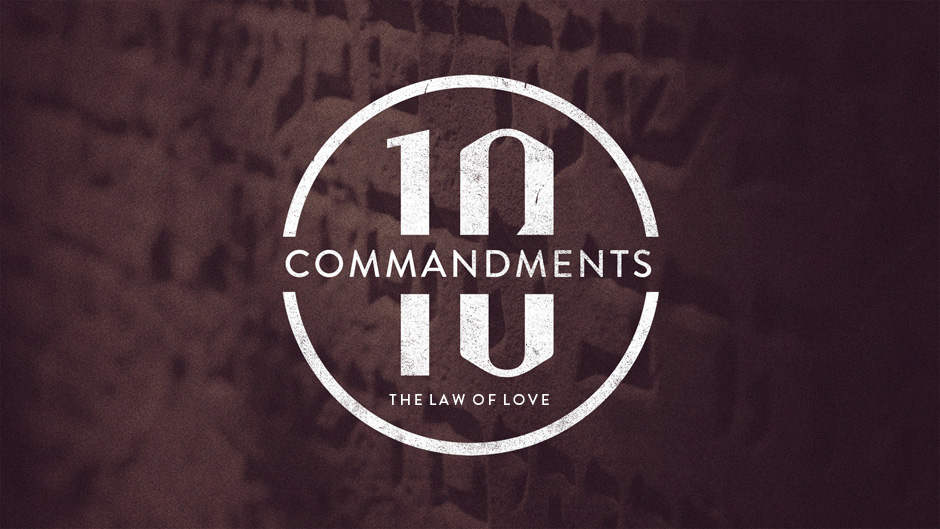
Sometime back in 2014 I decided we’d spend the next few summers at IDC walking through the Pentateuch. It’s impossible to understand the rest of Scripture from the first five books. Also, because they are largely narratives, we wouldn’t need to spend years upon years getting through them.
So, last summer we journeyed through Genesis, largely shaping each sermon around a particular character or patriarch. June 2016 came around, and we began Exodus. The plan was to finish up chapter 40 at the end of September. But God’s Spirit gave me a hitch about that scheme, a hitch that asked, “Why not preach a “series within a series” on the 10 Commandments?”
I may never again preach through Exodus. Did I want to miss out on the opportunity to think carefully about one of the Old Testament’s most important sections?
An Oddly Compelling People
As we lead our little congregation, there are a few things we want to be true about IDC (a praying, disciple-making, welcoming, and singing church). Should God allow these few things to flourish in our lives, we believe a kind of congregational life will arise. You could call this corporate life as being mere faithfulness. But we like to think of it as oddly compelling. We find Scripture instructing God’s people to love the Lord in such a way that the world thinks us odd. But odd need to be off-putting. It seems to us that the biblical view of “odd” is quite compelling. “People will see your good works and glorify your Father in heaven,” Jesus said. Faithful churches are strange to the culture—strangely attractive.
What best summarizes the church’s oddly compelling lifestyle? Those “Ten Words” once written on stone tablets, now written on human hearts.
Recovering a Forgotten Friend
I could be my personal experience, but a special study of the 10 Commandments seems to have disappeared from evangelicalism. The saints of old would give us a good talking to about this. For what were the ordinary tools of catechesis the church used throughout the centuries? The Apostle’s Creed, the Lord’s Prayer, and . . . yep . . . the 10 Commandments.
I have many theories on why gospel-preaching churches no longer hold the Stone Tablets’ hands. The fundamental reason surely is the widespread neglect of the Old Testament in most churches. We’ve so rightly divided Scripture that we assume the Old Testament belongs not only to a different age but different people. But even if you’re theologically convinced the Commandments belong to a former age, you can’t deny that they are still instructive—in some way—today (Rom. 15:4; 1 Cor. 10:6, 11).
At least that’s what we believe at IDC. So, Lord willing, on September 11th we will stare at those stony scratches Moses made.
7 Useful Resources
I’m thankful there is a cottage industry of resources on the 10 Commandments. But cottages tend to get crowded. Best friends can thus be hard to find. Here then are some of the most helpful resources I’ve found in my study (with publishers’ description included).
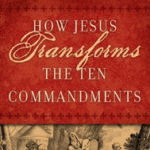 How Jesus Transforms the Ten Commandments by Edmund Clowney. For many Christians, conditioned to emphasize our freedom from the law, Jesus’ words seem strange, even incompatible with the gospel of grace. If Jesus did not abolish the law, then how should we look at the Ten Commandments today?
How Jesus Transforms the Ten Commandments by Edmund Clowney. For many Christians, conditioned to emphasize our freedom from the law, Jesus’ words seem strange, even incompatible with the gospel of grace. If Jesus did not abolish the law, then how should we look at the Ten Commandments today?
Clowney explains how Jesus intensifies the law and expands its scope to every situation in life. But as the author did so often during his ministry, he goes further, finding Christ in the law and showing how he fulfills it for his people. Thus believers will learn more, not only of God’s character revealed in the law, but also of the gospel with its focus on Christ.
Divided into eleven chapters, each with study questions for reflection and application, this book is an ideal resource for group study and personal growth.
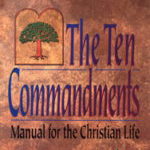 Ten Commandments: Manual for the Christian Life by Joachim Douma. The Ten Commandments provide “the fundamental pointers we need for our concourse with God and our neighbors,” writes Professor J. Douma in this work. As the subtitle indicates, the Ten Commandments are a manual for the Christian life, relevant to all thought and experience.
Ten Commandments: Manual for the Christian Life by Joachim Douma. The Ten Commandments provide “the fundamental pointers we need for our concourse with God and our neighbors,” writes Professor J. Douma in this work. As the subtitle indicates, the Ten Commandments are a manual for the Christian life, relevant to all thought and experience.
In this commentary on the commandments, Douma tackles the difficult yet practical issues of our time with insight, thoroughness, and faithfulness to God’s word. Discussions of the commandments span current issues from religious art to sorcery and witchcraft, from Sunday observance to civil disobedience, from abortion to euthanasia and suicide.
Because the commandments speak to every area of life, this volume lends itself to a wide range of uses. Pastors, professors, counselors, and thoughtful laypeople will gain much wisdom and direction from this careful, up-to-date exposition of the Ten Commandments.
 The Rule of Love: Broken, Fulfilled, and Applied by J.V. Fesko. In The Rule of Love, J. V. Fesko gives an introductory exposition of the Ten Commandments. Beginning with the importance of the prologue, and then addressing each Commandment in turn, he sets forth a balanced and biblical approach that places the law in proper perspective. Throughout the book, Fesko analyzes the historical context of God’s giving the law in order to help us accurately understand the moral demands God places upon humanity.
The Rule of Love: Broken, Fulfilled, and Applied by J.V. Fesko. In The Rule of Love, J. V. Fesko gives an introductory exposition of the Ten Commandments. Beginning with the importance of the prologue, and then addressing each Commandment in turn, he sets forth a balanced and biblical approach that places the law in proper perspective. Throughout the book, Fesko analyzes the historical context of God’s giving the law in order to help us accurately understand the moral demands God places upon humanity.
Yet, Fesko does not stop there; he also discusses the covenantal and redemptive context in which the law was given. Thus, he shows that the law is not presented to us in order for us to present ourselves right before God. Rather, it demonstrates our failure to love God as we should and points us to Christ and His perfect obedience in all that God requires of us. Fesko also shows how Christ applies the commandments to His people by the indwelling power and presence of the Holy Spirit.
This is an excellent survey of the Ten Commandments that promises to bring about a more accurate understanding of the proper uses of the law, as well as engender profound gratitude for all that God is for us in Christ.
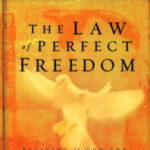 The Law of Perfect Freedom: Relating to God and Others Through the Ten Commandments by Michael Horton. The Ten Commandments are not Moses’ bright ideas or simply God’s suggestions; they are God’s categorical requirements. In The Law of Perfect Freedom, Michael Horton weaves theological truth with practical application to help believers live out the Ten Commandments. Understanding how to live out these commandments brings vitality and victory to our walk with God.
The Law of Perfect Freedom: Relating to God and Others Through the Ten Commandments by Michael Horton. The Ten Commandments are not Moses’ bright ideas or simply God’s suggestions; they are God’s categorical requirements. In The Law of Perfect Freedom, Michael Horton weaves theological truth with practical application to help believers live out the Ten Commandments. Understanding how to live out these commandments brings vitality and victory to our walk with God.
 Keeping the Ten Commandments by J.I. Packer. They are often mistakenly considered God’s ‘rules’—his outdated list of do’s and don’ts that add up to a guilt-ridden, legalistic way of life. But as beloved author and Bible scholar J. I. Packer probes the purpose and true meaning of the Ten Commandments, readers will gladly discover that these precepts can aptly be called God’s design for the best life possible. They contain the wisdom and priorities anyone needs for relational, spiritual, and societal blessing—and it’s all coming from a loving heavenly Father who wants the best for his children.
Keeping the Ten Commandments by J.I. Packer. They are often mistakenly considered God’s ‘rules’—his outdated list of do’s and don’ts that add up to a guilt-ridden, legalistic way of life. But as beloved author and Bible scholar J. I. Packer probes the purpose and true meaning of the Ten Commandments, readers will gladly discover that these precepts can aptly be called God’s design for the best life possible. They contain the wisdom and priorities anyone needs for relational, spiritual, and societal blessing—and it’s all coming from a loving heavenly Father who wants the best for his children.
Not only does Packer deliver these truths in brief, readable segments, but he includes discussion questions and ideas for further study at the end of each chapter. This book will challenge readers to view the commandments with new eyes and help them to understand—perhaps for the first time—the health, the hope, and the heritage we’re offered there.
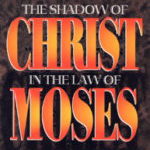 The Shadow of Christ in the Law of Moses by Vern Poythress. What does the Old Testament have to do with Jesus Christ? Everything.
The Shadow of Christ in the Law of Moses by Vern Poythress. What does the Old Testament have to do with Jesus Christ? Everything.
The first five books of the Old Testament were written centuries before the birth of Jesus. Yet they intricately involve him. Here Vern S. Poythress explores Genesis through Deuteronomy, demonstrating how the sacrifices and traditions of the Hebrews graphically foreshadow Christ’s relationship with his people. Dr. Poythress also explains how the penalties of the law refigure the destruction of sin and guilt through Jesus.
Christ himself is the key that unlocks the riches of the Old Testament. With remarkable clarity and insight, Poythress opens the door to our understanding the law of Moses and its relationship to the gospel.
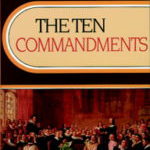 The Ten Commandments by Thomas Watson. In this book Thomas Watson continues his exposition of the Shorter Catechism drawn up by the Westminster Assembly. Watson was one of the most popular preachers in London during the Puritan era. His writings are characterized by clarity, raciness and spiritual richness. The series of three volumes, of which this is the second, makes an ideal introduction to Puritan literature.
The Ten Commandments by Thomas Watson. In this book Thomas Watson continues his exposition of the Shorter Catechism drawn up by the Westminster Assembly. Watson was one of the most popular preachers in London during the Puritan era. His writings are characterized by clarity, raciness and spiritual richness. The series of three volumes, of which this is the second, makes an ideal introduction to Puritan literature.
There are few matters about which the Puritans differ more from present-day Christians than in their assessment of the importance of the ten commandments. The commandments, they held, are the first thing in Christianity which the natural man needs to be taught and they should be the daily concern of the Christian to the last.
In The Ten Commandments Watson examines the moral law as a whole as well as bringing out the meaning and force of each particular commandment. In view of the important function of the law in Christian life and evangelism this is a most valuable volume.
And Don’t Forget!
In addition to the books above, every preacher would be wise to consult the Westminster Shorter Catechism for precise commentary and the Heidelberg Catechism for pastoral counsel. They are like perfectly aged, truth-filled wine for the soul. Your heart will be glad.
Rethinking “Revelation & Response”
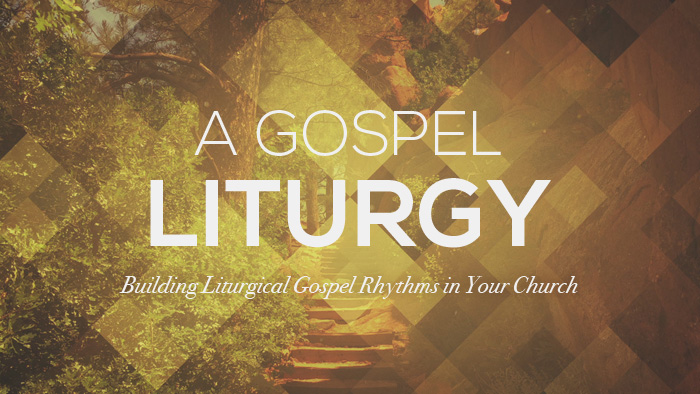
Most of my doctoral studies at The Institution focus on matters of biblical spirituality and historical theology. Any seminars I take outside of my major center on the topic of “Christian Worship.” Call it my Th.M. side project. I’m trying to reclaim liturgical theology as a matter for preachers. Pastors need not be versed in matters of musical theory, composition, or choral skill in order to oversee their congregation’s liturgy. They only need to know their Bible. Which, of course, is part of what makes a pastor a pastor.
Let me tease out for you something I’m working on related to how we should understand what happens in gathered worship. The more I research the common view on liturgical construction, the more I’m convinced something’s gone missing. And that “something” is actually what protects our liturgy as having a gospel flow.
The Tried and True Model
Perhaps the most typical liturgical rhythm recognized in recent literature is that of worship as a dialogue. Robert Rayburn, the founding president of Covenant Theological Seminary, was an early advocate for this model as he attempted to chart a way forward for churches integrating the best of the past with the best of contemporary contributions to worship and liturgy. A dialogical pattern suffuses his recommendations for liturgical in his seminal work O Come Let Us Worship.[1] Around the same time Ralph Martin, former Professor of New Testament at Fuller Theological Seminary, was making exciting discoveries in the field of worship. In his The Worship of God he celebrates, “One of the most exciting and important rediscoveries of our time has been the dialogue shape of Christian worship.”[2] Mark Karlberg scans church history and concludes the dialogical model is no recent innovation, “Whatever the precise form and shape of corporate worship over the span of the history of the Christian church, worship is . . . the dialogue between God and his covenant people.”[3] What exactly does this “dialogical shape” look like in practice? Martin answers, “The distinctive genius of corporate worship is the two-beat rhythm of revelation and response. God speaks; we answer. God acts; we accept and give.”[4] The model is powerful enough to convince Constance Cherry that our worship services should center on this dialogical principle. She writes,
In its most basic form, corporate worship is a real meeting between God and God’s people. Like any meeting, this one takes place through dialogue. God speaks and listens to the gathered community; we speak and listen to God. In the course of a guided conversation (the worship order), the encounter happens . . . If planners consider ordering worship according to a conversation, there is a far greater possibility for truly experiencing the reality of God’s presence than if another approach is used. Some approaches result in God as the topic of this conversation; dialogical worship planning results in God as the partner in this conversation.[5]
Furthermore, Ron Man, the director of Worship Resources International, says revelation and response in the “the paradigm of true worship.”[6]
The “revelation and response” model of worship not only has a history in Christianity, but it also in Scripture. Cherry notes four representative examples from God’s word: the burning bush encounter between God and Moses (Ex. 3:1-12), Isaiah’s vision of heaven (Isa. 6:1-13); Mary at the Annunciation (Luke 1:26-38), and the disciples on the Emmaus Road (Luke 24:13-35). The examples lead Cherry to elucidate the following five-fold pattern for dialogical worship,
- God approaches (initiating a conversation).
- The person experiences discontinuity between the divine and the human.
- God speaks.
- The person responds.
- God sends.[7]
The liturgical rhythm I’m advocating indeed sees revelation and response as integral elements of the worship movement. However, the proponents of this model routinely miss a third, integral part of the biblical rhythm: reception.
A Missing Ingredient in Dialogical Model
In A Better Way: Recovering the Drama of God-Centered Worship, Westminster Seminary California professor Michael Horton sees value in the revelation and response model. He rightly says, “Whenever we gather for public worship, it is because we have been summoned . . . But we also gather to receive God’s gifts. And this is where the emphasis falls—or should fall. Throughout Scripture, the service is seen chiefly as God’s action.”[8] Many modern liturgies undercut the central role God plays in the drama of worship by, however unintentionally, highlighting man’s grateful response to God’s revelation as the sum and substance of worship. This fact is seen in John Frame’s definition of worship as, “The work of acknowledging the greatness of our covenant Lord.”[9]
Against this somewhat one-sided view, Lutheran scholar Vilmos Vajta accents reception as the appropriate orientation for worship, “Faith will never reach that degree of maturity where it could live without receiving. A grateful reception of God’s gracious gifts will always remain the task of Christian worship, for it impossible to evolve a church service out of the spiritual assets of the believers.”[10] “We come as those who receive first and then, second, only in reciprocal exchange do we give back what is appropriate as grateful praise and adoration,” concludes Jeffrey Meyers (emphasis original).[11]
Why Reception is Vital for A Gospel Liturgy
So, yes, God reveals Himself, and then His people respond in worship. But we can only respond because we have received the gracious power of His Spirit that enables us to sing, prayer, read, hear, and eat. This is the full biblical sweep of the gospel.
See then the rhythm of revelation, reception, and response: the revelation of God’s holiness and man’s sinfulness has gone out to the ends of the earth; the revelation of God’s love came at Calvary when Jesus took the sins of His people and satisfied God’s wrath; the revelation of Christ’s victory over sin, Satan and death broke through on Easter Sunday; the revelation of Christ as King came with His ascension and session at the Father’s right hand; God graciously grants faith to those He’s chosen and gives them the Holy Spirit; it is then—and only then—that sinners can respond with faith, love, repentance, and praise.
Therefore, accenting the nature of worship as inclusive of “reception” protects the biblical gospel we want to shape our services. Horton explains,
This is why the method of grace’s delivery cannot be separated from its content. If it is by grace alone, salvation must be delivered by a medium in which the sinner is a receiver. That medium is preaching (as well as sacrament). A service in which the congregation is almost exclusively active (for instance, in singing, especially in singing about what they are doing and will do) abruptly interrupts this Pauline logic.[12]
If we, as pastors, get this vital connection we will ask a practical question: How then should this liturgical gospel rhythm of revelation, reception, and response inform our liturgy?
I hope to offer a proposal in a future post.
————————————————————————————–
[1] Rayburn, O Come, Let Us Worship: Corporate Worship in the Evangelical Church, 162-175.
[2] Martin, The Worship of God: Some Theological, Pastoral, and Practical Reflections, 6.
[3] Karlberg, Engaging Westminster Calvinism: The Composition of Redemption’s Song, 121.
[4] Martin, The Worship of God: Some Theological, Pastoral, and Practical Reflections, 6.
[5] Cherry, The Worship Architect, 45. See also Dawn, Reaching Out Without Dumbing Down, 106.
[6] Man, Proclamation and Praise: Hebrews 2:12 and the Christology of Worship, 47–51. See also, Furr and Price, The Dialogue of Worship: Creating Space for Revelation and Response.
[7] Cherry, The Worship Architect, 45.
[8] Horton, A Better Way: Recovering the Drama of God-Centered Worship, 24.
[9] Frame, Worship in Spirit and Truth, 1.
[10] Vajta, Luther on Worship, 129.
[11] Meyers, The Lord’s Service: The Grace of Covenant Renewal Worship, 94
[12] Horton, A Better Way: Recovering the Drama of God-Centered Worship, 42.
3 Properties of Sermon Style

Largely due to Doug Wilson’s gloriously incessant postings of Shedd quotations I cried, “Ad Fontes!” and ran down an old copy of Homiletics and Pastoral Theology. I may write an extended review in the future, but all I’ll say for now is, “Feast away my preacher friend. Feast away.”
Shedd served as a Professor of English Literature for part of his academic career. Literary and rhetorical skill shine through on each page (hence why Wilson can ransack the book for pithiness). This brother knows what style is and teaches us how to preach it.
3 Fundamental Properties of Style
Shedd writes, “The fundamental properties of good discourse are as distinct and distinguishable as those of matter. Many secondary qualities enter into it, but its primary and indispensable characteristics are reducible to three: plainness, force, and beauty.” The Union man goes on to admit such characteristics aren’t peculiar to evangelical preaching, but they do have “a special reference to Sacred Eloquence.”
When people have asked me how they can pray for my preaching I’ve typically said, “Pray that it be bold (Eph. 6:20) and clear (Col. 2:2).” Shedd merely adds a third marker—beauty. If you need convincing that beauty belongs in the discussion just read Psalm 96 and Steve DeWitt’s book. Since finishing Homiletics and Pastoral Theology, I’ve started praying each day for God to make my sermons more plain, forceful, and beautiful.
To whet your appetite for an exploration of Shedd’s instruction, let me string together some choice remarks on each stylistic property.
Plainness in Preaching
- “The understanding is the avenue to the man. No one is affected by truth who does not apprehend it. Discourse must therefore, first of all, be plain.”
- “Plainness of style is the product of sagacity and keenness. A sagacious understanding always speaks in plain terms. A keen vision describes like an eye-witness.”
- “Everything that covers up and envelopes the truth should be stripped off from it, so that the bare reality may be seen. There is prodigious power in this plainness of presentation.”
- “When the style is plain, the mind of the hearer experiences the sensation of being touched; and this sensation is always impressive, for a man starts when he is touched.”
- “The preacher should toil after [plainness], as he would toil after virtue itself.”
- “The preacher whose head it right, and whose conscience is right, will soon come to possess a love for this plainness.”
Force in Preaching
- “[Force] in discourse renders it penetrative. Plainness is more external in its relations to the mind; force is more internal.”
- “Force is power manifested,—power streaming out in all directions, and from every pore of his mind.”
- “The oratorical power of the preacher depends on his recipiency; upon his contemplation of [truth].”
- “The preacher’s first duty, in respect to [force], is to render himself a biblical student . . . He is one whose mind is continually receiving the whole body of Holy Writ into itself in a living and genial way, and how, for this reason, is becoming more and more energetic in his methods of contemplation and more and more forcible in his modes of presentation. A truly mighty sacred orator is ‘mighty in the Scriptures.'”
- “Force is electrical; it permeates and thrills.”
- “Perhaps the sole cause of the success of the radical orator . . . [is that] he is a man of one lone idea. . . . As a consequence he is an intense man—a forcible man. His utterances penetrate.”
Beauty in Preaching
- “The best definition of beauty is . . . multitude in unity.”
- “So long as the sermon is destitute of unity, it must be destitute of beauty.”
- “Method (organization), unity, and simplicity are essential properties of true beauty.”
- “There is no danger of an excess of unity and method in the sermon. The closer and more compact the materials, the simpler and more symmetrical the plan, the better the sermon.”
- “The preacher should always make beauty of style subservient to plainness and force.”
If you’re looking for a fast and free way to read Shedd’s work, here you go!
Praying Longer
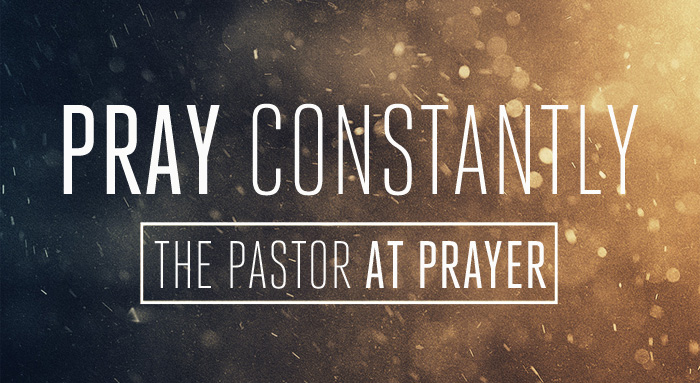
I’ve never met a pastor who believes he prays enough. Even those for whom prayer is their life’s breath tell me how they long to pray with more concentrated length.
Count me among those pastors trying to figure out how to pray with greater faith and length.
Quickly Moving it Along
On the third Monday of each month, our church gathers for corporate prayer. We spend seventy minutes in groups of three to four praying for all manner of things: emphases of Scripture, other churches, our Gospel Partners, the children in our congregation, various people in authority, and whatever else is pressing. After nearly three years of leading these meetings I’ve learned many valuable lessons. Perhaps the most significant one is how easy it is to pray for an extended period of time—provided you have structure.
One of our “3 Commandments for Corporate Prayer” is that to be brief. I’m sure we all have many stories of individual prayers dominating a corporate gathering. People come ready to pray and then leave thinking, “I didn’t get any time to pray.” Thus, each month I try to remind our people to keep each prayer brief. That way everyone gets to pray and pray often.
Last week we spent an hour praying through the Beatitudes. That meant each group spent about five minutes praying through each Beatitude. We started at 7:00 p.m. and 8:00 p.m. (our end time for prayer) arrived with astonishing speed. Multiple people told me afterward how amazing it was to find that praying for an hour through Scripture was so easy. Rarely does a Prayer Night go by without someone saying something similar. When the prayers are structured and pointed, we surprise ourselves how long we can pray.
Why Hadn’t I Thought of This Before?
I try to block off the 2 p.m. hour for focused prayer. My problem, like so many struggling prayer-ers, is a wandering heart. I have tried praying through various portions of Scripture, working through a prayer app on my phone, and my concentration seems to fly forth like a leaf in a tornado. What I’ve been doing just isn’t working. While reflecting on the encouraging responses from Prayer Night I had something of an Archimedian—eureka!—moment. “Why not,” I thought, “do something similar in my own prayer time?” (I wish it didn’t take me so long to try such a strategy, but God leads us patiently and perfectly. He apparently didn’t mean for me to try this until now.)
I pulled up Word and wrote down sixty different points for prayer. My thought was that if I prayer through all sixty I’d find extended prayer entirely possible. I broke down the list into the following categories:
- Personal Piety. I listed out seventeen different matters of personal holiness I long to grow in my life.
- Family. I’m praying here for my immediate family by name and then any extended family issues that need intercession.
- Pastoral Ministry. Here I’m praying for my preaching, evangelism, and faithfulness in my calling as a shepherd.
- Church. I put down various issues related to IDC’s congregational life that need daily prayer. This section also includes praying for our church’s ministries and Gospel Partners.
- Governing Authorities. I’m only trying to obey 1 Timothy 2:1–2.
- Operation World‘s Country-of-the-Day
- Matters of the Moment. This section is the most fluid of the bunch. For example, right now I’m for our Vacation Bible School that begins on August 1st. After next week this prayer point will rotate off the list.
Cautiously Optimistic
I recognize the method isn’t for everyone. I thrive on order and routine, so this plan suits me quite nicely. Having not done it for any substantial period, I won’t make bombastic proclamations about having discovered a silver bullet for prayer. All I’ll say at this point is: I think I may have found the silver bullet. May you find something similar.
5 Truths for Real Revival

For the last few weeks, I’ve been tinkering away on a paper comparing Jonathan Edwards and Robert Murray M’Cheyne’s defenses of revival. I won’t bore you with the academics of establishing a link between the two men; you’ll just have to trust me on this: no one (outside of Thomas Chalmers) had such discernible influence on M’Cheyne as Edwards.
A Spark and The Sun
On March 20, 1832, M’Cheyne wrote in his diary, “Read part of the life of Jonathan Edwards. How feeble does my spark of Christianity appear beside such a sun! But even his was a borrowed light, and the same source is still open to enlighten me.” This first recorded encounter with the Northampton pastor was powerful enough to cause M’Cheyne to purchase Edwards’ works three months later and begin to read them in earnest. Andrew Bonar, his closest friend, and biographer, remarks, “It was [during his first pastoral charge] . . . that [M’Cheyne] began to study so closely the works of Jonathan Edwards—reckoning them a mine to be wrought, and if wrought, sure to repay the toil.”
M’Cheyne’s toil was repaid in full. I think we can see that in how similar the 1838–1840 revival at St. Peter’s Dundee (described in Evidences on Revival) was to the 1734–1735 awakening in Edwards’ Northampton church (famously defending in A Narrative of the Surprising Work of God). One simple way to trace this is how each man used revival history in his congregation.
In the Faithful Narrative of a Surprising Work of God, Edwards tells his readers, “There is no one thing that I know of which God has made such a means of promoting his work amongst us, as the news of others’ conversion.” M’Cheyne too stoked the fire of awakening by recounting God’s great act in revivals of old during weekday services. I thus ask, “How then might Edwards and M’Cheyne encourage awakening in our own time? How might we pursue similar experiences of revival?” I believe to note and pursue five key commonalities each man emphasized.
5 Truths for Real Revival
Revival is the work of God’s sovereign spirit. Each pastor k he could not manufacture an awakening. There were no “new measures” to be discovered. Instead, a rediscovery of dependence upon God’s Spirit was needed, to see Him move in extraordinary power. Today, particularly in the Western church, temptations to pragmatism lurk in every place. Many ordinary pastors lead stagnated congregations. The bones are dry. But God’s Spirit is no less powerful today than he was in 1734–1735 and 1839–1840. Edwards and M’Cheyne challenge us to be patiently urgent in waiting for the Spirit’s breath to whistle forth a rattling sound through our age’s dry bones.
Revival depends on earnest prayer. Edwards and M’Cheyne each recount how the awakenings came after prolonged periods of prayer. Increased devotion to and delight in prayer became one of the clearest fruits of the Spirit’s work in revival. Pastors today will know an awakening has come—or is on the way—when the weekly prayer meeting is full. Another marker will be when multiple prayer meetings take over the church’s ordinary corporate life. Prayer calls upon the Spirit to begin blowing and keep blowing. M’Cheyne’s convicting conclusion at the end of Evidences on Revival is that only pastors “given to secret prayer” will experience an authentic awakening.
Revival comes through preaching Christ. Preaching is the chariot that brings down Christ to a church’s soul. A heralded Christ is what ignited the revival fires at Northampton and Dundee. Haykin reminds, “The deeply held pneumatological conviction in Edwards (and M’Cheyne’s) Reformed heritage [is] that the Spirit is a Christ-centred and Christ-exalting Spirit.” “Nothing but preaching the pure gospel of the grace of God,” M’Cheyne said, can bring about awakening. Let us then continue to preach Christ—crucified, risen, and ascended—believing it is only when He is lifted up continuously in our sermons that He will draw all men to Himself.
Revival increases the weight of God’s glory. A striking feature of both accounts is how revival brought reverence to the respective congregations. Instances of extreme ecstasy happened, but awful solemnity swallowed them whole. Edwards, with relentless attention, shows how fear and solemnity plowed through sinful hearts to plant salvation’s seed. “There seems to be far more of a solemn awe upon the minds of men than formerly . . . There is far more solemnity in the house of God,” M’Cheyne recounts. Our modern age exalts exuberant authenticity, which surely has a place in Christ’s church. Edwards and M’Cheyne remind us, however, that God also deserves our trembling, reverent worship. When the Spirit falls, He does so with heaviness. God’s glory bears eternal, incomprehensible weight. In awakenings, souls feel its force and respond with reverence.
Revival includes the children. While Edwards and M’Cheyne do tell us how the awakenings touched people from all walks of life, they nevertheless single out one special group: children. God used the youth in each church to raise a cup of gladness and shout a song of praise. Our Savior rebuked those who prevented the children from coming to Him. Let not His rebuke fall on us. In our preaching and pastoring, let us bend the knee and speak with tender hearts. Require not an unreasonable degree of theological or moral assent from your covenant children—they too may find Christ’s blessing.
Imitate Their Faith
In Philippians 3:17 Paul exhorts, “Brothers, join in imitating me, and keep your eyes on those who walk according to the example you have in us.” Jonathan Edwards and Robert Murray M’Cheyne are heroes to whom we should look. M’Cheyne thought Edwards to be a mighty sun in history’s spiritual galaxy. May we, like M’Cheyne, find the star of our life reflecting such absorbing trust in the Spirit who blows wherever He wills.
